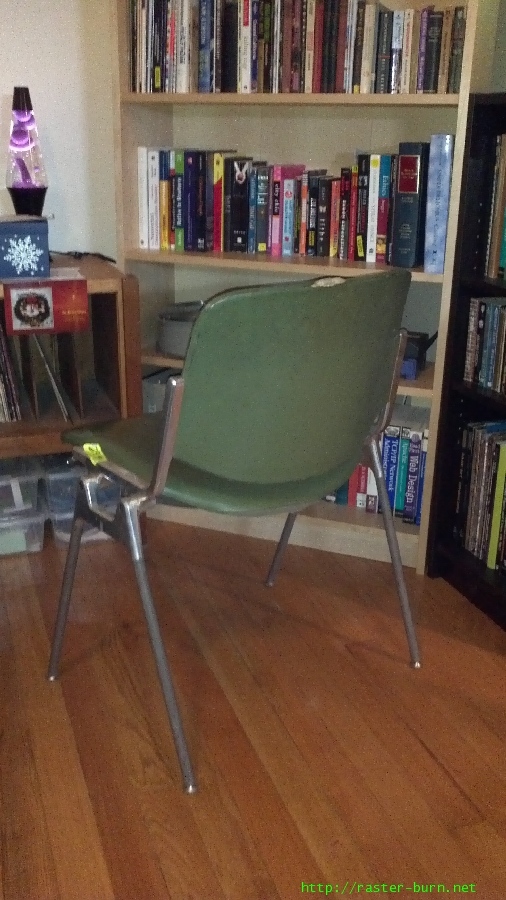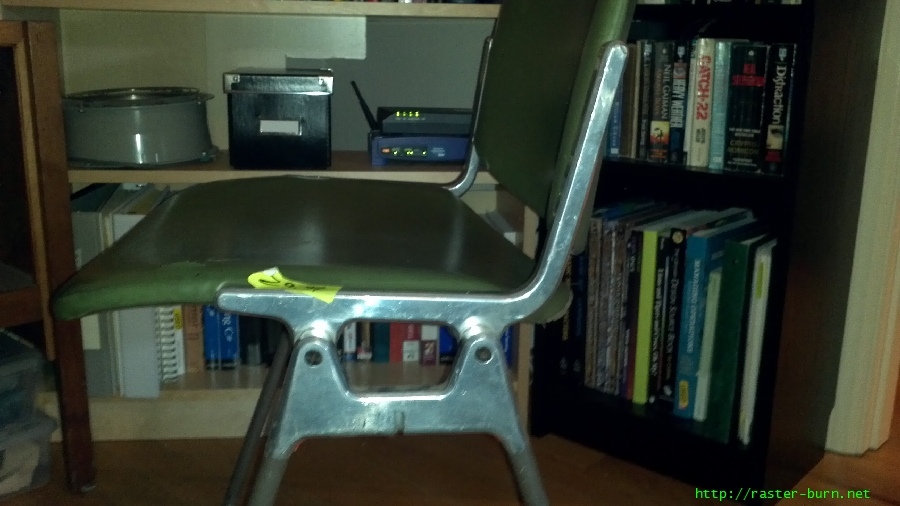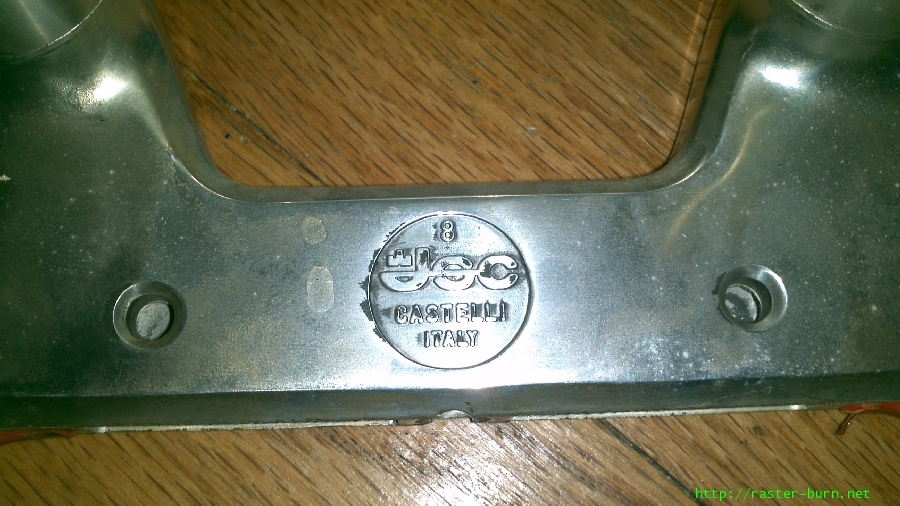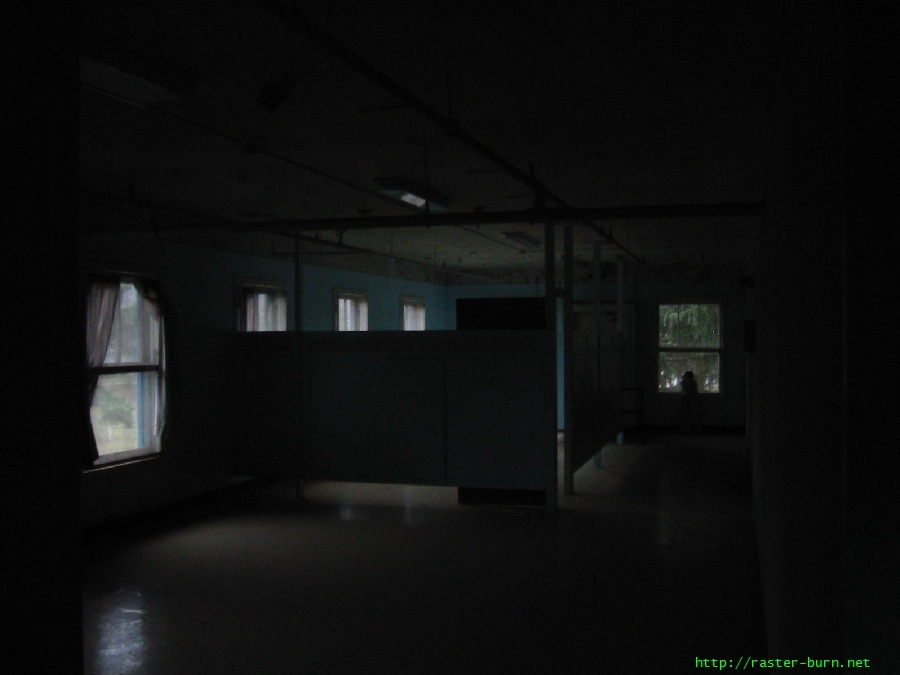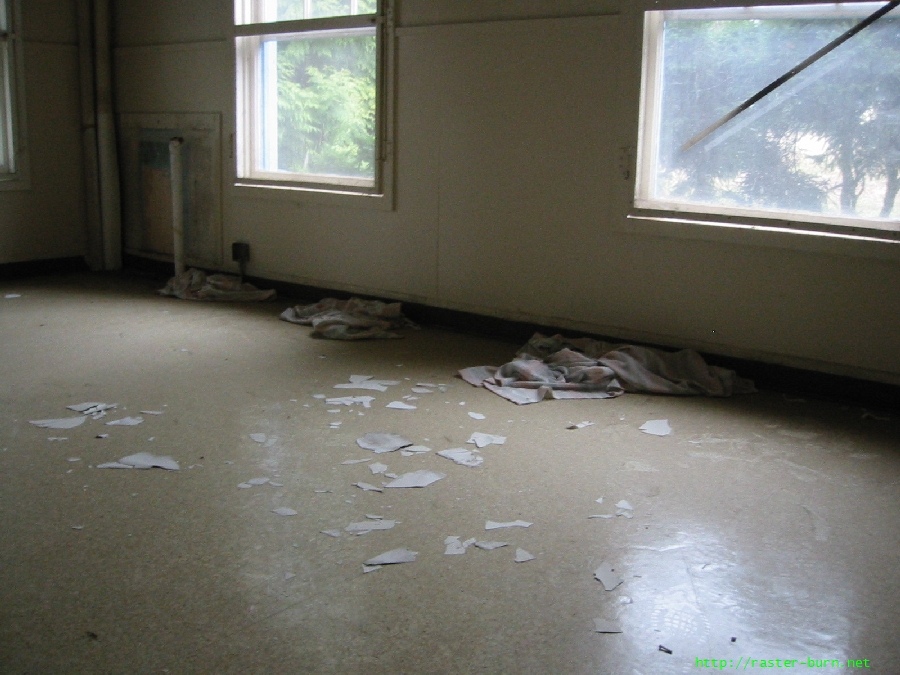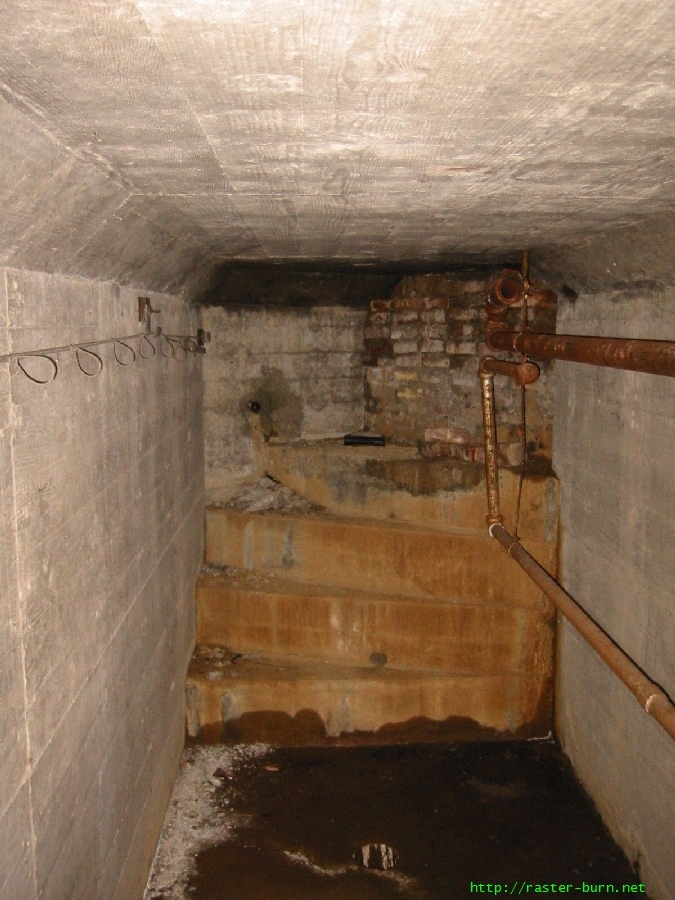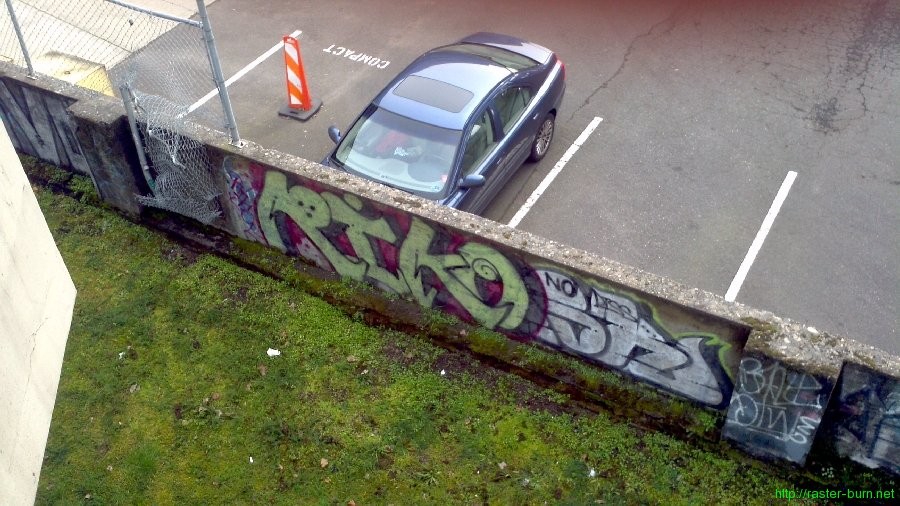Picked up this sweet old Castelli DSC 106 chair for $30 from City Liquidators today! It was part of a pair but the other one was missing some of the feet, and I’m pretty sure they are made of unobtanium.
It’s apparently a 1965 design, by the Castelli company. It’s a pretty handsome, and cleverly engineered. Only four screws are used in the entire thing. The chairs consist of cast aluminum side brackets, with tube steel legs and under-seat crossbars clad in grey plastic. Small nylon stops set into the bottom of the side brackets keep them from clanking when stacked up. The seat and back are molded plywood, and can be found upholstered in vinyl, cloth, or bare with a varnished finish.
They’re still made today, sold as the Haworth DSC Axis 106, and retail between $570 and $787 depending on finish. More info from the company here.
Not sure how you can date one of these chairs accurately. One of the differentiating characteristics seems to be a number cast above the logo on the inside of the side brackets. My chair’s logo has an 8, and I’ve found examples of the logo with castings of 22, 73/7, and 69/6. I think it’s safe to say that the latter two are year/month combos, but I’m not so sure about the single and double digit ones. Maybe month of production since launch?


